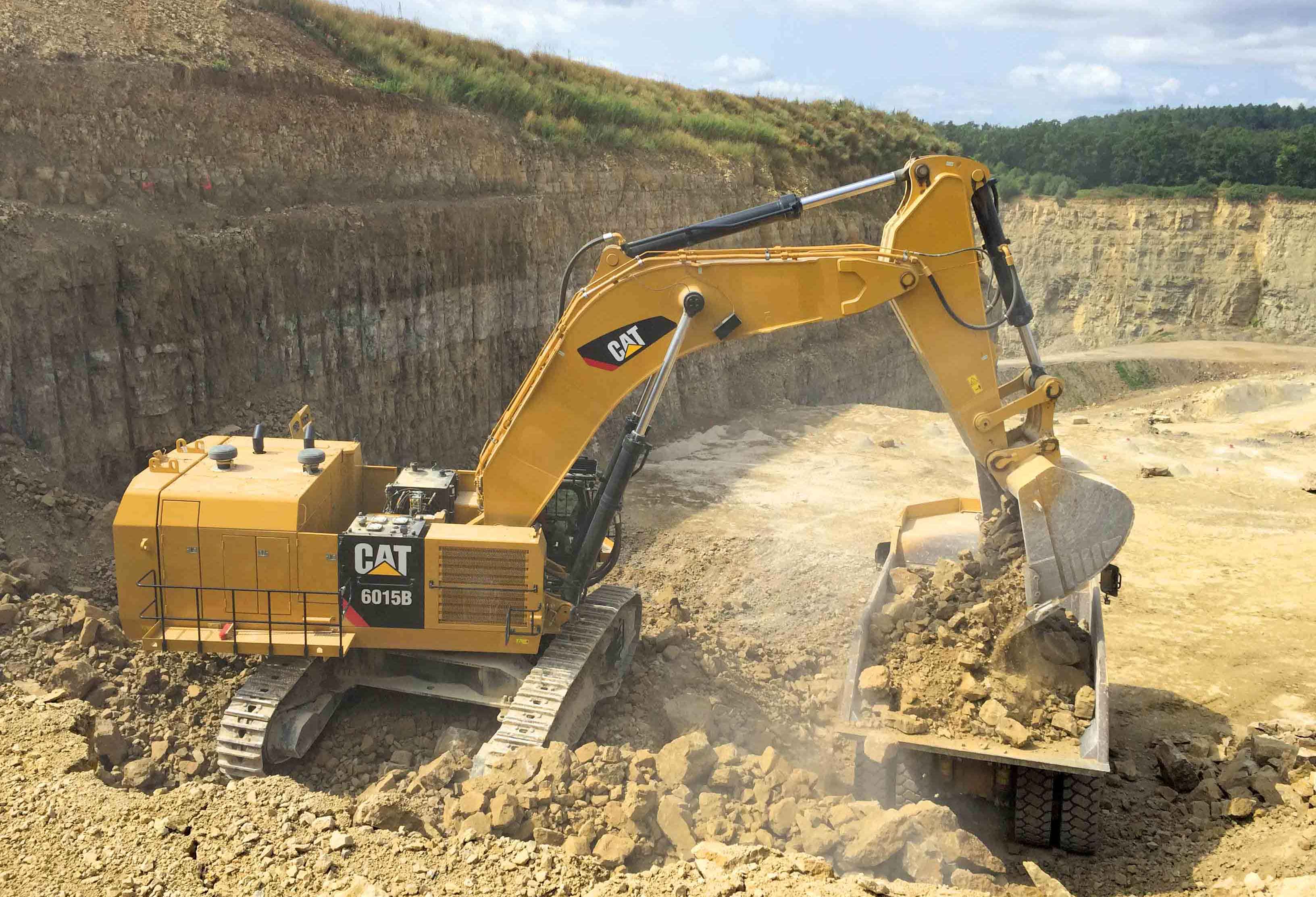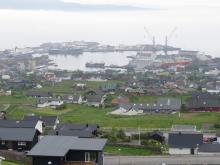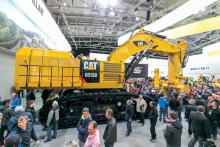
A new method of limestone extraction using Caterpillar equipment is proving a big success at a German quarry.
Baresel, one of the leading privately-owned aggregates producers in south-west Germany, has more than 40 employees at its main operation in Ehningen, a small town south of Stuttgart, the regional capital.
It also has quarries and gravel sites in southern Germany, and between Leipzig and Dresden in the eastern part of the country, and it operates its own workshop to maintain its mobile and stationary equipment.
For larger repair work it has the support of the local branch of
Baresel was founded in 1919 when construction company Carl Baresel took over the Ehningen quarry to extract material for the Böblingen–Horb railroad project. In 2012 it also moved into concrete recycling.
Wacker, a second generation family-owned construction company based in Filderstadt, near Stuttgart, is the contractor in the Baresel limestone quarry, responsible for the extraction, hauling and crushing process.
Annual production at the quarry is between 800,000tonnes and 1 million tonnes, and the company has an extraction/exploitation licence for at least 25 additional years with an option to extend.
In greater Stuttgart the current demand for aggregates, and outlook for the coming years, is very good, driven by important road and highway projects, including the Stuttgart 21 rail project.
Despite this positive aggregates demand, the prices for final aggregates products are under high pressure, and managing production costs is critical.
To improve this, the Baresel quarry has introduced direct material extraction from the face, a new method of extraction that replaces the drill, blast, load and haul method used until early 2016.
Wacker’s machine fleet includes the new 140tonne Caterpillar 6015B hydraulic shovel, currently with 8.1m³ rock bucket (backhoe), which will be replaced by a specially developed 6.6m³ ripping bucket with a 9tonne drop ball for breaking huge rocks.
This is used for direct extraction, and Martin Wurst, salesman and quarry specialist at Zeppelin, says that he is “very proud” having sold the first Cat 6015B in Europe.
The 6015B bucket, fitted with C70 tips (hammerless Cat GET), has been designed and developed by Zeppelin Böblingen branch together with the Caterpillar Work Tool Group in Denbosch, the Netherlands, for this special application.
Other Wacker equipment includes a Caterpillar 352F XE hydraulic excavator, 3.3m³ rock bucket and Oil Quick quick coupler along with two 772G dump trucks.
Baresel’s machine fleet is impressive and includes six Caterpillar machines (two 730C ADTS; a D6T track-type tractor, and three wheeled loaders, 966H and 988H and 972M XE).
Caterpillar technology at the quarry is a CPM Payload system on the 972M XE and 352F XE; TPMS Payload system on the 772 trucks, and VisionLink to track and monitor fuel consumption.
At Baresel, the Cat 352F XE, along with two 730Cs, is used to remove the Dolomite overburden and waste materials, while two Cat 772s haul the material to the primary crusher from where the crushed material is transported via the conveyor belt to the processing plant.
The production requirement is 600tonnes/hour, and the 966H and 972M XE are used for loading on-highway trucks with finished product.
The blasting process saw a waste ratio in the range of 40% of total extracted material, and in order to reduce this, the customer, together with Martin Wurst, investigated and discussed alternatives.
Due to fragmentation and consistency of the material, they considered trying direct extraction from the face using a Cat 390F backhoe with the drop ball.
Test results were “very positive” but breakout force for direct extraction reached its limit in areas with harder material, and hourly production rates were difficult to sustain with the Cat 390F. It was decided to use the Cat 6015B.
Oliver Wacker, co-owner of Wacker, says that it was a high risk to change the process from blasting to direct extraction, but it was “absolutely the right decision” and the Cat 6015B exceeds his expectations especially concerning fuel consumption by far.
The new process reduces the waste material ratio down to 20%, and this translates into seven years of additional exploitation time at the quarry.
The recently-purchased Cat 352F XE (replacing a Cat 336D) burns 23litres/hour of fuel, less than the 336D, while in the load-out area the Cat 972M XE uses 11.7litres/hour, some 28% less than the 966H in the same application.
The customer is “impressed by fuel consumption of Cat 6015B,” which currently averages 65litres/hour.
Frank Loibl, the Cat 6015B operator, says the superior forces of the machine make direct extraction look so easy and he achieves hourly production of 600tonnes without any problems.
Ralf Jessberger, managing director of Baresel, says he is also impressed with the performance of the Cat 6015B, and that the direct extraction process can reduce waste ratio by 20% and save resources.









